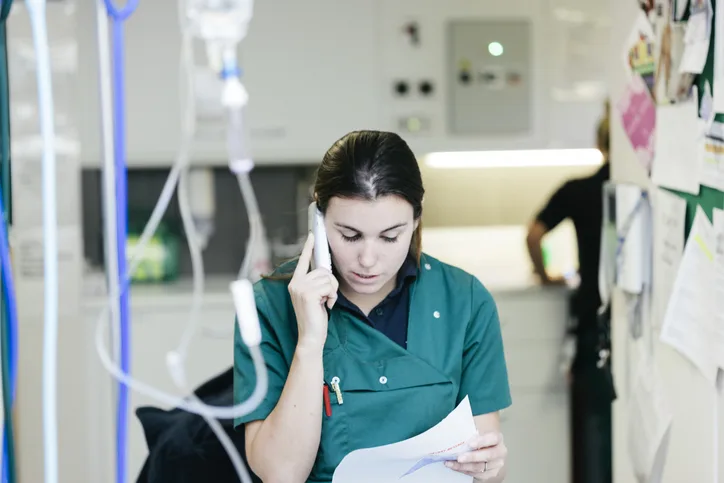
Available emergency doctor, please call 1001, rDVM holding, can be heard multiple times daily at busy emergency clinics. Emergency room (ER) clinicians and specialists continuously receive phone calls requesting transfer of patients that require advanced care or hospitalization. In my hospital, a referral center outside of a large metropolitan area, the emergency service caseload increased by 26% to 28% from 2019 to 2021. A large portion of these cases were referrals from primary care clinicians and urgent care hospitals.
With a continuous increase in caseloads and decrease in available staffing, it can be difficult to meet referring clinicians’ needs.
Providing the Most Helpful Information
Time limitations can prevent referring facilities from providing all of the necessary information during a transfer call. Clinicians may also be hesitant due to perceived feelings of judgment from the receiving clinician about the patient’s treatment, but the intention of a transfer call is to gain information, not to cast judgment. These calls typically last <2 minutes and should be dedicated to relaying patient history, patient status, and expectations, as well as information about the client’s emotional state and financial ability.
I asked 25 ER clinicians to share what the most efficient patient transfers should include. Here are their suggestions:
Take the time to personally make the phone call. It’s easier to understand a patient’s condition when speaking directly with the clinician.
Prepare the client. Educate the client (and document conversations in the patient's medical record) with a cost estimate, prognosis, and estimated wait time at the referral facility. Sending a patient with a known poor prognosis to a referral facility without first discussing prognosis or potential cost of treatment with the client can place an unnecessary burden on the receiving clinician.
Share records. Patient records should be sent electronically and physically (with the client). Lack of records can result in unnecessary repeat testing and frustration.
Provide accurate treatment times. If a patient is stabilized prior to transfer, records should indicate exact administration times and doses of medications and treatments. If the patient was anesthesized, records should include drugs given, vitals monitored, and any relevant notes.
Communicate with the ER clinician about client conversations. Receiving clinicians can communicate with clients more effectively when they know what information the client has already received, what the reactions were, and what expectations should be on arrival at the emergency clinic.
Research Report: State of ER & Specialty Care in 2024
What are the biggest challenges ER and specialty hospitals face in 2024. Instinct surveyed 545 emergency and specialty veterinary professionals to better understand current challenges and opportunities. Get the full analysis and takeaways here.
Coordinating With Local Emergency Hospitals to Distribute Caseloads.
To avoid overwhelming one facility, referral and emergency clinics can keep local primary care clinics informed of their capacity using a consistently updated shared document or spreadsheet. Sending patients to facilities with available capacity can reduce wait times and improve client experiences. Shared information might include:
Clinic name, location, and phone number
Time and date information was last updated
Current estimated wait time
Current intensive care unit capacity
Whether or not the hospital is accepting patients for hospitalization versus outpatient treatment
Available specialties, including imaging (eg, ultrasound, CT, MRI) capabilities and on-call/after-hours services (eg, dialysis, surgery, endoscopy)
Species treated
Any additional notes (eg, low on blood products, no ventilator available)
Conclusion
Clinicians should work together in their community to provide the best possible patient care. At the center of a seemingly never-ending stream of patients, communication is critical to shared success.